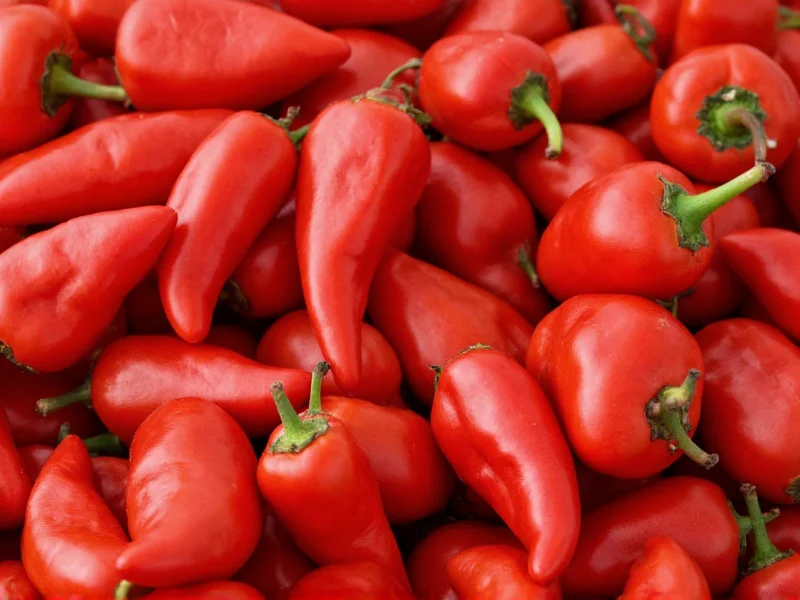When exploring is paprika sweet, it’s essential to understand that “paprika” refers to a spectrum of ground pepper products with distinct flavor profiles. Unlike single-origin spices, paprika’s characteristics depend entirely on the pepper varieties used and regional production methods. This explains why home cooks often wonder what does sweet paprika taste like compared to other types.
Understanding Paprika Varieties and Their Sweetness Levels
The confusion around is Hungarian paprika sweet stems from regional naming conventions. In Hungary, “sweet paprika” (desníóni) denotes the mild, non-spicy variety that forms the backbone of traditional goulash and chicken paprikash. Meanwhile, Spanish paprika (pimentón) categorizes sweetness differently—with “dulce” indicating mildness rather than sugary flavor.
| Paprika Type | Heat Level (Scoville) | Flavor Profile | Common Uses |
|---|---|---|---|
| Hungarian Sweet | 0-150 SHU | Earthy, mild pepper flavor with subtle fruitiness | Classic paprikash, deviled eggs, potato salad |
| Spanish Smoked (Dulce) | 100-500 SHU | Deep smokiness with underlying sweetness | Paella, roasted vegetables, bean dishes |
| Hungarian Hot | 5,000-10,000 SHU | Peppery heat with minimal sweetness | Spicy stews, meat rubs, hot sauces |
| Sweet Hungarian Ground | 0 SHU | Pure pepper sweetness without smoke or heat | Coloring soups, mild spice blends, salad dressings |
Why “Sweet” Paprika Isn’t Sugar-Sweet
The term “sweet” in difference between sweet paprika and regular paprika contexts refers to the absence of capsaicin-induced heat, not sugary sweetness. Sweet paprika delivers the natural fruitiness of fully ripened red peppers without the burn found in hot varieties. This distinction is crucial for recipe success—substituting hot paprika for sweet can ruin dishes expecting mild flavor.
When evaluating is smoked paprika sweet, note that Spanish pimentón dulce offers both smokiness and mildness, but the smoke flavor dominates over any inherent sweetness. Authentic smoked paprika gets its character from peppers dried over oak fires, creating complex flavor notes that complement rather than mask the pepper’s natural mildness.
Culinary Applications Based on Sweetness
Understanding paprika’s sweetness spectrum prevents common cooking mistakes. Sweet paprika works best in dishes where you want vibrant color and pepper flavor without heat—think deviled eggs, potato salads, or creamy sauces. Its mild profile makes it ideal for dishes served to children or heat-sensitive eaters.
Chefs often blend sweet and smoked paprika to create layered flavor profiles. For example, adding 1 part sweet Hungarian paprika to 2 parts smoked Spanish paprika yields a balanced seasoning for roasted chicken that’s neither bland nor overpowering. This technique addresses the practical concern behind paprika sweetness level chart searches—how to combine varieties effectively.
Identifying Quality Sweet Paprika
Freshness dramatically impacts perceived sweetness. High-quality sweet paprika should have:
- Bright red color (dull brown indicates staleness)
- Aroma of fresh peppers rather than mustiness
- Smooth texture without gritty particles
When shopping, check for regional designations like “Hungarian Sweet” or “Pimentón Dulce” rather than generic “sweet paprika” labels. Premium varieties often specify the pepper types used, such as “Külsőmentes” for Hungarian sweet paprika, indicating adherence to traditional production methods that preserve natural sweetness.
Common Misconceptions About Paprika Sweetness
Many home cooks mistakenly believe all paprika should taste identical. The reality is that is paprika sweet depends entirely on the specific product. Some common misunderstandings include:
- Myth: “Sweet paprika contains added sugar”
- Fact: Authentic paprika contains only ground peppers—no sweeteners
- Myth: “All Hungarian paprika is sweet”
- Fact: Hungary produces sweet, hot, and rose varieties
- Myth: “Smoked paprika can’t be sweet”
- Fact: Spanish pimentón dulce is specifically the mild, smoked variety
Storage Tips to Preserve Flavor
To maintain paprika’s delicate sweetness, store it properly:
- Keep in airtight container away from light and heat
- Use within 6 months for peak flavor (sweetness fades over time)
- Refrigeration extends shelf life but may cause clumping
Stale paprika loses its nuanced sweetness and develops bitter notes. When in doubt, perform a taste test—fresh sweet paprika should have a clean, pepper-forward flavor without harshness.
FAQs About Paprika Sweetness
Is all paprika sweet?
No, paprika comes in sweet, smoked, and hot varieties. “Sweet paprika” specifically refers to mild varieties without heat, while hot paprika contains capsaicin. The term “sweet” indicates absence of heat, not sugary flavor.
Can I substitute sweet paprika for regular paprika?
Yes, but check what “regular paprika” means in your recipe. In American contexts, “regular” often means sweet paprika. For Hungarian recipes, use authentic Hungarian sweet paprika. Never substitute sweet for hot paprika in equal amounts if heat is required.
Why does my paprika taste bitter instead of sweet?
Bitterness usually indicates stale paprika. Sweet paprika should have mild, earthy notes. Exposure to heat, light, or air degrades flavor compounds, creating bitterness. Store paprika in an airtight container in a cool, dark place and replace every 6 months.
Is smoked paprika the same as sweet paprika?
No, though smoked paprika can be sweet. Spanish pimentón comes in dulce (sweet), agridulce (bittersweet), and picante (hot). Smoked paprika has distinct wood-fire notes, while sweet paprika emphasizes pure pepper flavor without smoke. They’re not interchangeable in recipes requiring specific flavor profiles.
What’s the difference between Hungarian and Spanish sweet paprika?
Hungarian sweet paprika offers pure pepper flavor with subtle fruitiness, while Spanish sweet paprika (pimentón dulce) has distinctive smokiness from oak-drying. Hungarian varieties work best in creamy dishes, while Spanish smoked paprika excels in rice and meat preparations where smokiness enhances flavor complexity.











 浙公网安备
33010002000092号
浙公网安备
33010002000092号 浙B2-20120091-4
浙B2-20120091-4